The Promise of AI in Subsea Applications
7th May 2024Artificial intelligence (AI) is rapidly gaining traction throughout several domains, permeating every corner of the globe. It delivers many benefits in different areas; for instance, its incorporation into vision systems in healthcare scenarios for diagnostic purposes and image processing in oil, gas and power fields to spot infrastructural flaws. However, due to the harsh atmosphere in which oceanic activities occur, its impact is particularly pronounced in the subsea realm. In this article, we look at how AI can change the game for day-to-day subsea practices, improving productivity, worker welfare and decision-making to unmatched heights.
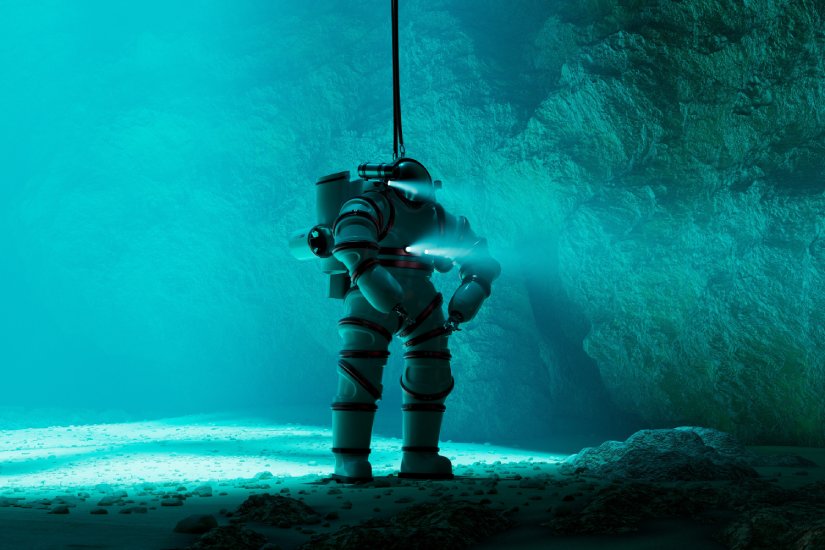
The UK AI arena, presently valued at over $21bn, is forecast to exceed $1tn by 2035 [1], underscoring an imminent wave of additional automation. Furthermore, multiple sources highlight the “crucial role [2]” it’s poised to fulfil in shaping the future of offshore energy. Couple this with the sheer danger of procedures, and there’s undoubtedly a permanent place for the smart tech.
Here, we investigate a handful of the subdivisions from the subsea sphere that can, and frequently do, benefit from automation:
Underwater Welding
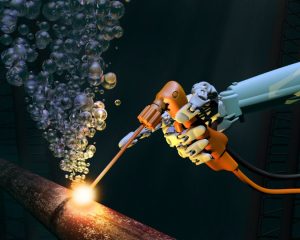 Considered one of the most dangerous jobs, the task of deep-sea-diving underwater welding (sometimes referred to as hyperbaric welding) faces a raft of complexities. For illustration, high-pressure settings and low visibility, which are, of course, less than ideal conditions for the mission at hand. But, the threats transcend these challenges; there’s also the chance of becoming disoriented and getting lost in the sea’s boundless expanse, decompression sickness and even electrocution [3] and explosions.
Considered one of the most dangerous jobs, the task of deep-sea-diving underwater welding (sometimes referred to as hyperbaric welding) faces a raft of complexities. For illustration, high-pressure settings and low visibility, which are, of course, less than ideal conditions for the mission at hand. But, the threats transcend these challenges; there’s also the chance of becoming disoriented and getting lost in the sea’s boundless expanse, decompression sickness and even electrocution [3] and explosions.
AI and robotics equipped with manipulator arms hold great prospects in performing these welding tasks, offering real-time observation and control to alleviate the numerous hazards faced by human divers. Whilst it’s not currently in widespread use, there is a programme, RESURGAM, dedicated to introducing an AI-enabled friction stir welding (FSW) bot for submerged weld repairs [4] into use, albeit in European shipyards.
Subsea Cable Management
Curiously, satellites are often believed to be the primary means of international communication, but the reality is that submarine cables, laid on the seabed, shoulder the bulk of telecommunications traffic, responsible for carrying approximately 99% of the world’s communications [5]. In fact, their significance surpasses simple connectivity; undersea cabling is said to facilitate around $10tn of financial transfers daily in the banking sector [6].
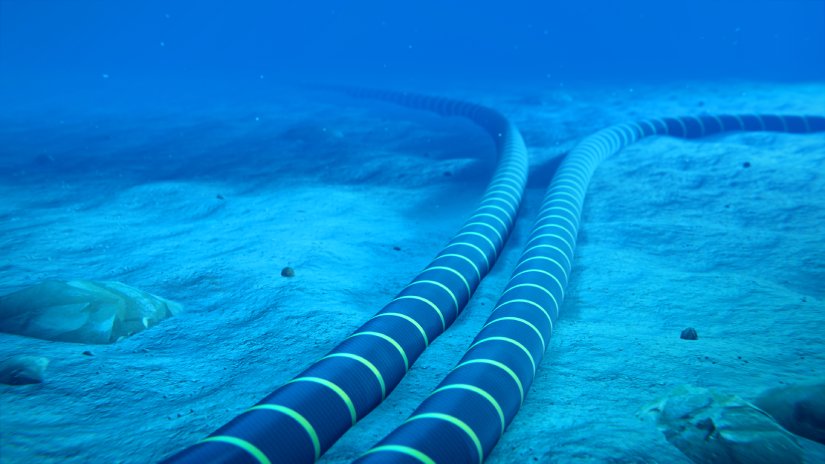
With such a monumental responsibility, serving as the backbone for businesses and industries worldwide, the oversight of these cables is imperative. Despite being hidden far below the sea level, they face various pitfalls that could potentially disrupt or damage functions; namely anchor dragging, bottom trawling, and net entanglement. In such instances, AI and machine learning are being adopted to evaluate soundness and collate integral information, such as cable longevity, any abnormalities and the likelihood of risks.
Deep-Sea Mining
As the global electric vehicle (EV) battery market is projected to grow to $66.24bn US dollars by 2027 [7], key materials – in particular lithium, cobalt, and graphite – have become indispensable elements in EV tech and the expanding sectors of wind turbines, solar panels, and separate low-carbon technologies [8]. The growing demand has led to the prospect of alternative sites, including the seabed, in search of these fundamental commodities.
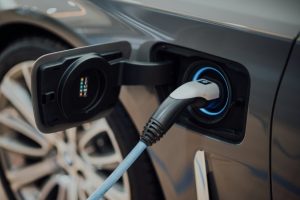 In a groundbreaking development, one AI-powered underwater bot is revolutionising works in deep-sea mining, a process traditionally conducted using tethered collector submersibles or robot vacuums to gather valuable resources from the sea floor. Fitted out with cameras, AI and sophisticated ‘claws’, the system selectively collects ‘potato-sized rocks’ containing cobalt, copper, and nickel while preserving the delicate ecosystem on the seafloor by avoiding disturbance to nautical life [9].
In a groundbreaking development, one AI-powered underwater bot is revolutionising works in deep-sea mining, a process traditionally conducted using tethered collector submersibles or robot vacuums to gather valuable resources from the sea floor. Fitted out with cameras, AI and sophisticated ‘claws’, the system selectively collects ‘potato-sized rocks’ containing cobalt, copper, and nickel while preserving the delicate ecosystem on the seafloor by avoiding disturbance to nautical life [9].
Underwater Environmental Monitoring
The vitality of our oceans and ecosystems has been under the spotlight for a significant period, and although endeavours with scuba divers, remotely operated vehicles (ROVs), and autonomous underwater vehicles (AUVs) have been deployed to conduct detailed surveys of habitats, species populations, and biodiversity, there’s a huge potential for AI to provide us with greater perspectives into the health of our marine surroundings.
Fujitsu has harnessed the capabilities of LiDAR (Light Detection and Ranging) and AI to create an ocean digital twin, a virtual replica of aquatic territories, facilitating the study of ecosystems and the application of conservation efforts in a cyber format. The innovative technology, intended to be incorporated into AUVs, employs AI for visual enhancement, colour correction, and accuracy, resulting in precise renderings of situations [10].
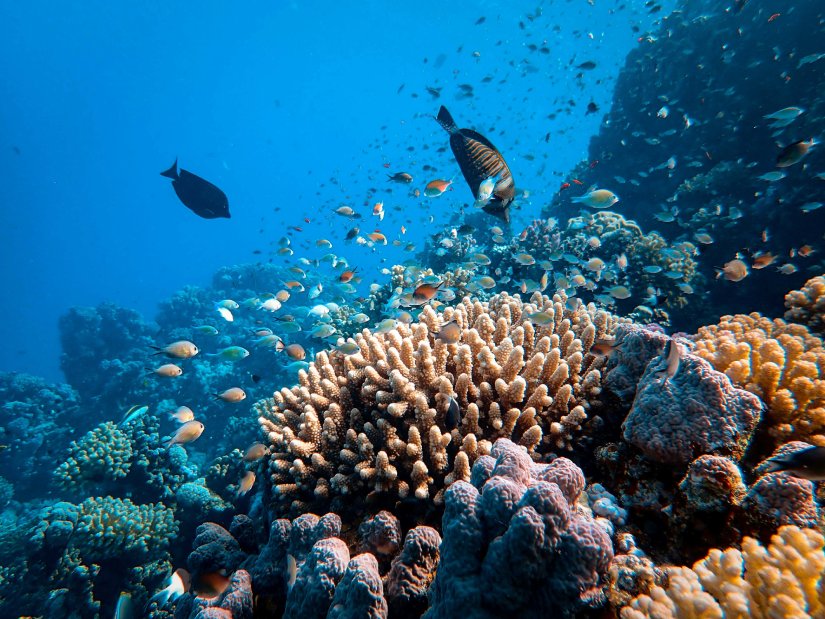
Collectively, innovations are paving the way for a safer, more connected tomorrow in high-risk subsea circumstances where cutting-edge efficiency is paramount. Through the adoption and advancement of AI, we not only enhance undertakings like dredging but also open doors to further venturing of the uncharted abyss. With only a mere 5% of the ocean explored [11], the vast unknown beneath the surface beckons for discovery. AI-driven tools equipped to delve to unprecedented depths hold the key to unlocking newfound insights, and their success hinges on the integration of the right parts to guarantee seamless operation.
Optical Components and Subsea AI Systems
In order for AI duties to perform effectively, premium optical components like ours are integrated into their hardware where cameras, sensors, LiDAR, and other optical devices – such as underwater hyperspectral imaging (UHI), for example – act as the eyes of automated mechanisms.
Optics For Optimal Results
There are a wide variety of components used in AI, all chosen based on the context of specific utilisation.
Common variants include:
 Lenses: Ranging from Achromatic Lenses to mitigate chromatic aberration and Aspheric Lenses to minimise spherical aberration to Hydrophobic-Coated alternatives, they all serve an important purpose in enhancing image quality to ensure the proper functioning of AI.
Lenses: Ranging from Achromatic Lenses to mitigate chromatic aberration and Aspheric Lenses to minimise spherical aberration to Hydrophobic-Coated alternatives, they all serve an important purpose in enhancing image quality to ensure the proper functioning of AI.
 Windows: From Flat Windows for flat ports, such as Sapphire or BK7 (or equivalent) varieties, and Dome Windows as protective viewports with 360º sight to Anti-Reflective-Coated options for reductions in reflections and glare, these optics are typically applied to maintain optical clarity, correct distortion and shield internal parts, allowing cameras and sensors to capture essential data.
Windows: From Flat Windows for flat ports, such as Sapphire or BK7 (or equivalent) varieties, and Dome Windows as protective viewports with 360º sight to Anti-Reflective-Coated options for reductions in reflections and glare, these optics are typically applied to maintain optical clarity, correct distortion and shield internal parts, allowing cameras and sensors to capture essential data.
 Filters: Neutral-Density (ND), Fluorescence, Bandpass and UV Filters are all employed to help control exposure levels in imaging systems, filter out background light and isolate fluorescence signals to enable AI to detect and analyse fluorescence phenomena and to protect devices from UV radiation, respectively.
Filters: Neutral-Density (ND), Fluorescence, Bandpass and UV Filters are all employed to help control exposure levels in imaging systems, filter out background light and isolate fluorescence signals to enable AI to detect and analyse fluorescence phenomena and to protect devices from UV radiation, respectively.
By employing these on-spec optics as part of state-of-the-art AI frameworks, subsea operations are propelled beyond conventional limitations and pave the way for a new generation of exploration and infrastructure maintenance in underwater environments.
FOOTNOTES:
[1] https://www.trade.gov/market-intelligence/united-kingdom-artificial-intelligence-market-2023
[2] https://www.energyvoice.com/renewables-energy-transition/548735/artificial-intelligence-set-to-play-crucial-role-in-future-energy-systems
[3] https://www.nationalgeographic.com/environment/article/underwater-welding-dangerous-job
[4] https://www.resurgamproject.eu/index.html
[5] https://www.ingenia.org.uk/articles/undersea-information-sharing/#:~:text=This%20urgent%20need%20for%20extra,of%20the%20world’s%20telecommunications%20traffic.
[6] https://www.teoco.com/blog/how-advancements-in-machine-learning-and-ai-are-safeguarding-the-worlds-undersea-cables
[7] https://www.statista.com/statistics/1359411/electric-vehicle-battery-market-size-worldwide/#:~:text=In%202021%2C%20the%20global%20size,billion%20U.S.%20dollars%20in%202027.
[8] https://www.wri.org/insights/deep-sea-mining-explained
[9] https://www.cbsnews.com/video/how-artificial-intelligence-could-be-used-in-deep-sea-mining
[10] https://www.iotworldtoday.com/connectivity/fujitsu-uses-ai-underwater-drones-for-ocean-digital-twin
[11] https://oceanliteracy.unesco.org/ocean-exploration/